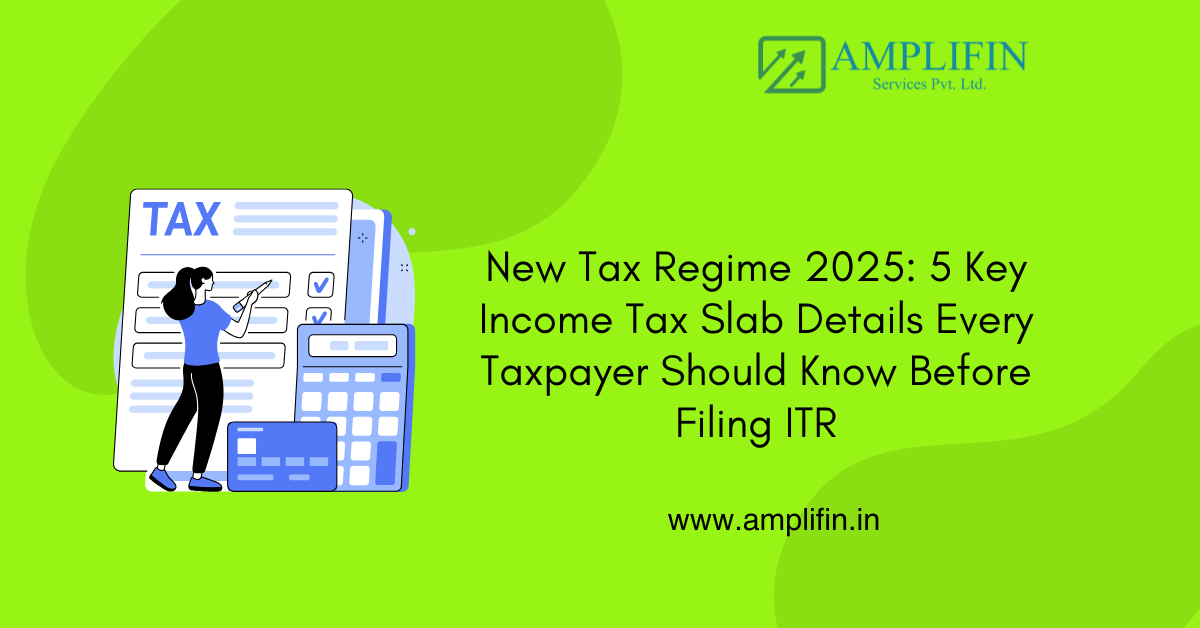Income Tax Slabs and Rates for FY 2024-25 (AY 2025-26): Complete Guide to New vs Old Tax Regime
Understanding the income tax slabs and rates for FY 2024-25 (Assessment Year 2025-26) is crucial for every taxpayer in India, particularly in the context of the old and new tax regime is the default option. This comprehensive guide breaks down both the new tax regime and old tax regime, helping you make an informed decision about which system works best for your financial situation. Whether you’re a salaried individual, business owner, or professional, this article will help you understand your tax liability and optimize your tax planning for the latest income tax rates.

What Are the Major Changes in Income Tax Slabs for AY 2025-26?
The income tax department has introduced several significant changes in the tax structure for FY 2024-25. The new tax regime has become the default option for taxpayers, though individuals still retain the choice to opt for the old tax regime. Under the new system, the basic exemption limit has been revised, and the tax slab rates have been restructured to provide relief to taxpayers.
These changes reflect the government’s effort to simplify the tax structure while ensuring fair taxation. The revised income tax slabs have been designed to encourage more taxpayers to switch to the new tax regime, which offers lower tax rates but fewer deductions, potentially affecting how much you pay income tax.
How Does the New Tax Regime Compare to the Old Tax Regime?
The new tax regime and old tax regime differ significantly in their approach to taxation, particularly in how they handle tax rebates under section 87A. The new system offers more slabs with lower tax rates but eliminates most deductions and exemptions. Under the old regime, while the tax rates might be higher, taxpayers can claim various deductions under sections 80C, 80D, and other provisions of the income tax act.
Comparing both regimes is essential for taxpayers to make an informed choice. The decision depends on various factors, including total income, available deductions, and investment patterns, which ultimately affect your ability to pay tax. The new tax regime might benefit those with fewer investments and deductions, while the old regime could be advantageous for those who actively invest and claim multiple deductions under the income tax slab for FY.
What Are the Tax Slab Rates for FY 2024-25 Under Both Regimes?
Under the new tax regime for FY 2024-25, the tax slabs and rates have been structured to provide relief to middle-income taxpayers. The basic exemption limit has been increased, and the tax rates have been rationalized across different income brackets, particularly for income up to Rs. The income tax slab rate progressively increases as the taxable income of Rs rises.
The old tax regime maintains its previous structure with different tax rates and higher basic exemption limit when combined with various deductions, but the new income tax regime offers a different approach. Understanding these slab rates is crucial for calculating your income tax liability and choosing the most beneficial old and new tax regime.
Who Should Opt for the New Tax Regime?
The decision to opt for the new tax regime depends on several factors, including whether your total income does not exceed the threshold for optimal deductions. Taxpayers with limited deductions and exemptions, or those who don’t want to maintain investment proof documentation, might find the new regime more beneficial, especially if their annual income is lower. The lower tax rates under the new regime could result in higher take-home income for such individuals.
However, it’s important to calculate your tax liability under both regimes before making a decision, especially if your income exceeds the threshold for zero tax liability. The new regime is particularly advantageous for those whose income does not exceed Rs and who don’t claim significant deductions or have simplified income sources.
What Deductions Are Available in Each Tax Regime?
The old tax regime offers numerous deductions and exemptions under various sections of the income tax act, allowing taxpayers to reduce their taxable income up to Rs. These include deductions for investments, insurance premiums, home loan interest, and education expenses. The tax deductions and exemptions can significantly reduce your taxable income.
In contrast, the new tax regime offers minimal deductions but compensates with lower tax rates. Understanding available deductions under each regime is crucial for optimal tax planning and choosing the most beneficial income tax slab for FY.
How to Calculate Income Tax Under Different Regimes?
To calculate income tax liability, start by determining your gross total income from all sources, including income from house property, salary, and interest income. Under the old regime, subtract eligible deductions to arrive at your taxable income and determine your total income of Rs. Apply the appropriate tax slab rates to calculate your tax payable, ensuring you consider both the old and new tax regime.
For the new regime, since fewer deductions are available, the calculation is more straightforward. However, it’s essential to consider any applicable surcharge and cess in both cases. The income tax department provides online calculators to help taxpayers compare their tax liability under both regimes, including the new tax slabs under the new income tax regime.
What Are the Important Deadlines for AY 2025-26?
Filing your income tax return by the due date is crucial to avoid penalties and interest charges. The income tax department typically sets different deadlines based on taxpayer categories and audit requirements. Understanding these deadlines helps in timely compliance and avoiding additional charges related to tax rebates.
Regular updates from the income tax department should be monitored for any changes in deadlines or filing requirements, especially for AY 2024-25. Timely filing also ensures faster processing of returns and refunds, which can be crucial for taxpayers wanting to claim tax efficiently.
How Can You Optimize Your Tax Liability?
Strategic tax planning can help optimize your tax liability regardless of the chosen default tax regime, especially when considering the slabs under the new tax. Under the old regime, maximize available deductions through careful investment planning to lower your net taxable income. Consider tax-efficient investments and insurance products that provide both protection and tax exemption benefits to optimize your net taxable income.
For those opting for the new tax regime, focus on organizing your income sources efficiently. While fewer deductions are available, proper planning of salary components and investments can still help minimize tax liability.
Important Points to Remember:
- The new tax regime is now the default option for FY 2024-25
- Taxpayers can still choose to opt for the old tax regime
- Compare tax liability under both regimes, including the tax slabs under the new income tax regime, before making a choice.
- The old regime offers more deductions but higher tax rates
- New regime provides lower tax rates but fewer deductions
- The basic exemption limit varies between the new and old tax regimes.
- Filing deadlines must be strictly followed to ensure compliance with the new income tax regime.
- Tax planning strategies differ for each regime
- Regular monitoring of changes in the income tax law updates is essential to stay compliant and optimize tax outcomes.
- Professional advice may be needed for complex tax situations, especially when determining what is chargeable to tax under the income tax law.
